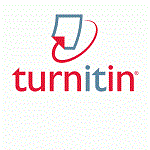Developing Worksheet Based on Multiple Intelligences to Optimize the Creative Thinking Students
DOI:
https://doi.org/10.25273/jipm.v7i1.2430Keywords:
student worksheet, multiple intelligences, creative thinkingAbstract
Downloads
References
Anwar, M. N. (2012). An Examination of the Relationship between Creative Thinking and Academic Achievements of Secondary School Students. International Interdisciplinary Journal of Education, 1(3), 44–53.
Bialik, M., Fadel, C., Trilling, B., Nilsson, P., & Groff, J. (2015). Skills for the 21st Century: What Should Students Learn? Retrieved from http://curriculum redesign.org/wp-content/uploads/ CCR-Skills_FINAL _June2015.pdf
Burns, M. (2014). About Teaching Mathematics. USA: Math Solution Publitions.
Depdiknas. Lampiran 1 Permendiknas No. 22 Tahun 2006 tentang Standar Isi (2006). Indonesia.
Derakhshan, A., & Faribi, M. (2015). Multiple Intelligences: Language Learning and Teaching. International Journal of English Linguistics, 5(4), 63–72. https://doi.org/10.5539/ijel.v5n4p63
Dolati, Z., & Tahriri, A. (2017). EFL Teachers’ Multiple Intelligences and Their Classroom Practice. SAGE Open, 7(3), 1–12. https://doi.org/ 10.1177/2158244017722582
Gardner, H. (2011). Frames of Mind; The Theory of Multiple Intelligence. New York: Perseus Book Group.
Jasmine, J. (2016). Profesional’s Guide: Teaching with Multiple Intelligences, translate by Purwanto. Bandung: Nuansa.
Judge, J. M., Stukenborg, G. J., Johnston, W. F., Guilford, W. H., Slingluff, C. L., & Hallowell, P. T. (2014). Design, Development, and Evaluation of a Novel Retraction Device for Gallbladder Extraction During Laparoscopic Cholecystectomy. Journal of Gastrointestinal Surgery, 18(2), 334–339. https://doi.org/
1007/s11605-013-2292-4
Lee, C. (2014). Worksheet Usage , Reading Achievement, Classes’ Lack of Readiness, and Science Achievement : A Cross-Country Comparison To cite this article : Worksheet Usage , Reading Achievement , Classes ’ Lack of Readiness, and Science Achievement : A Cross-Count. International Journal of Education in Mathematics, Science and Technology, 2(2), 96–106.
Mullis, I. V. S., Martin, M. O., Foy, P., & Hooper, M. (2016). TIMSS 2015 International Results in Mathematics. TIMSS & PIRLS International Study Center at Boston College.
Prastowo, A. (2015). Panduan Kreatif Membuat Bahan Ajar Inovatif. Yogyakarta: Diva Press.
Runisah, Herman, T., & Dahlan, J. A. (2016). The Enhancement of Students’ Creative Thinking Skills in Mathematics through The 5E Learning Cycle with Metacognitive Technique. International Journal of Education and Research, 4(7), 347–360.
Samsudin, M. A., Haniza, N. H., Abdul-Talib, C., & Mhd Ibrahim, H. M. (2015). The Relationship between Multiple Intelligences with Preferred Science Teaching and Science Process Skills. Journal of Education and Learning (EduLearn), 9(1), 53. https://
doi.org/10.11591/edulearn.v9i1.1118
Sulaiman, T., Hassan, A., & Yi, H. Y. (2011). An Analysis of Teaching Styles in Primary and Secondary School Teachers based on the Theory of Multiple Intelligences. Journal of Social Sciences, 7(3), 428–435.
Susanto, A. (2014). Teori Belajar & Pembelajaran di Sekolah Dasar. Jakarta: Kencana Prenadamedia Group.
Tapia CarlÃn, R. E., Castillo Salazar, M. del C., & Velázquez Cortés, S. (2013). A Mexican Study of Multiple Intelligences for Pre-Service Teachers of English as a Foreign Language Un estudio de inteligencias múltiples con futuros docentes de inglés como lengua extranjera mexicanos. HOW, A Colombian Journal for Teachers of English, 20, 170–189.
Töman, U., Akdinez, A. R., Obdaşi Çimer, S., & Gürbüz, F. (2013). Extended Worksheet Developed According to 5E Model Based On Constructivist Learning Approach. S October 2013 Volume: 4 Issue: 4 Article: 16 ISSN 1309-6249 EXTENDED, 4(4), 173–183.
Yaghoob, R. A., & Hossein, Z. P. (2016). The correlation of multiple intelligences for the achievements of secondary students. Educational Research and Reviews, 11(4), 141–145. https://doi.
org/10.5897/ERR2015.2532
YALMANCI, S. G., & GÖZÜM, A. I. C. (2013). the Effects of Multiple Intelligence Theory Based Teaching on Students’ Achievement and Retention of Knowledge (Example of the Enzymes Subject). International Journal on New Trends in Education & Their Implications (IJONTE), 4(3), 27–36. Retrieved from http://search.ebscohost.
com/login.aspx?direct=true&db=eue&AN=90520293&site=ehost-live
Downloads
Published
Issue
Section
License
Every accepted manuscript should be accompanied by "Copyright Transfer Agreement" prior to the article publication.
JIPM (Jurnal Ilmiah Pendidikan Matematika) by http://e-journal.unipma.ac.id/index.php/JIPM is licensed under a Creative Commons Attribution-ShareAlike 4.0 International License.
Â
Â







